Analyzing Commute Mode Choice Using the LCNL Model in the Post-COVID-19 Era: Evidence from China
Abstract
:1. Introduction
2. Literature Review
2.1. The Effects of COVID-19 on Transportation and Commute Mode
2.2. Discrete Models of Travel Behavior
3. Data and Methods
3.1. Data
3.2. Method
4. Results and Discussion
4.1. Results
- Wave 1
- Wave 2
4.2. Discussion
- Comparison within Two Waves
- Comparison between Two Waves
5. Conclusions and Future Research
- Age, income, household composition, and the frequency of use of travel modes are significant latent factors that impact the respondents’ attitude toward the mass transit nest and the auto nest under the impact of the COVID-19 pandemic. In wave 1, car owners were almost all car-oriented users and they showed less anxiety regarding public transport since they did not change their daily mobility pattern and the virus crisis from mass transit would not significantly affect their travel mode choice. Younger, middle- and low-income respondents living in a household with fewer family members, and public transport-dominated users might overlook the health risks on board and show less aversion emotion regarding mass transit. In wave 2, car owners may not be car-oriented commuters and they are more sensitive to both transit and auto nests, since they have substitutes for their current mode. Carless individuals usually take mass transit for work trips and keep a more positive attitude toward public transport, which is different from that in other developing countries [56]. In line with the reported findings in previous studies [57], older adults living in a big family are inclined to pay more attention to the risk of the infection, while it is inadequate to change their commute mode.
- Against the backdrop of controlling the spread of the disease, individuals’ trepidation regarding the infection risk gradually faded, but it was still a critical consideration in terms of travel mode choice. More individuals would prefer to take the health issue into account for commute mobility patterns and they are willing to pay more to improve the mass transit service in wave 1 than wave 2.
- The economic factor is a foundational base for the intention of car purchase. The pandemic enables researchers to stimulate the desire of buying a vehicle to some extent, but this is not the uppermost consideration in wave 2. On the contrary, due to the impact of the pandemic on the national economy and employment market, the individuals in wave 1 may not show a great demand for private cars.
- In light of economic reinvigoration and the increase in car ownership, urban traffic is faced with a great challenge but still remains in dynamic equilibrium. Since a large number of citizens are willing to take public transport to go to work even if they are car owners, mass transit is still the mainstream mode for commuters in the post-COVID-19 era.
Author Contributions
Funding
Institutional Review Board Statement
Informed Consent Statement
Data Availability Statement
Conflicts of Interest
References
- Cucinotta, D.; Vanelli, M. WHO Declares COVID-19 a Pandemic. Acta Bio Med. Atenei Parm. 2020, 91, 157–160. [Google Scholar] [CrossRef]
- Afifi, R.A.; Novak, N.; Gilbert, P.A.; Pauly, B.; Abdulrahim, S.; Rashid, S.F.; Ortega, F.; Ferrand, R.A. ‘Most at risk’ for COVID19? The imperative to expand the definition from biological to social factors for equity. Prev. Med. 2020, 139, 106229. [Google Scholar] [CrossRef] [PubMed]
- Sumathi, S.; Swathi, K.; Suganya, K.; Sudha, B.; Poornima, A.; Hamsa, D.; Banupriya, S.K. A broad perspective on COVID-19: A global pandemic and a focus on preventive medicine. Tradit. Med. Res. 2021, 6, 18. [Google Scholar] [CrossRef]
- Shaw, R.; Kim, Y.-K.; Hua, J. Governance, technology and citizen behavior in pandemic: Lessons from COVID-19 in East Asia. Prog. Disaster Sci. 2020, 6, 100090. [Google Scholar] [CrossRef]
- Chang, H.-H.; Lee, B.; Yang, F.-A.; Liou, Y.-Y. Does COVID-19 affect metro use in Taipei? J. Transp. Geogr. 2021, 91, 102954. [Google Scholar] [CrossRef]
- Labonte-LeMoyne, E.; Chen, S.L.; Coursaris, C.K.; Senecal, S.; Leger, P.M. The Unintended Consequences of COVID-19 Mitigation Measures on Mass Transit and Car Use. Sustainability 2020, 12, 9892. [Google Scholar] [CrossRef]
- Campisi, T.; Basbas, S.; Skoufas, A.; Akgun, N.; Ticali, D.; Tesoriere, G. The Impact of COVID-19 Pandemic on the Resilience of Sustainable Mobility in Sicily. Sustainability 2020, 12, 8829. [Google Scholar] [CrossRef]
- Jenelius, E.; Cebecauer, M. Impacts of COVID-19 on public transport ridership in Sweden: Analysis of ticket validations, sales and passenger counts. Transp. Res. Interdiscip. Perspect. 2020, 8, 100242. [Google Scholar] [CrossRef]
- Beck, M.J.; Hensher, D.A. Insights into the impact of COVID-19 on household travel and activities in Australia-The early days of easing restrictions. Transp. Policy 2020, 99, 95–119. [Google Scholar] [CrossRef]
- Beck, M.J.; Hensher, D.A. Insights into the impact of COVID-19 on household travel and activities in Australia-The early days under restrictions. Transp. Policy 2020, 96, 76–93. [Google Scholar] [CrossRef]
- Beck, M.J.; Hensher, D.A.; Wei, E. Slowly coming out of COVID-19 restrictions in Australia: Implications for working from home and commuting trips by car and public transport. J. Transp. Geogr. 2020, 88, 102846. [Google Scholar] [CrossRef] [PubMed]
- Przybylowski, A.; Stelmak, S.; Suchanek, M. Mobility Behaviour in View of the Impact of the COVID-19 Pandemic-Public Transport Users in Gdansk Case Study. Sustainability 2021, 13, 364. [Google Scholar] [CrossRef]
- Luan, S.; Yang, Q.; Jiang, Z.; Wang, W. Exploring the impact of COVID-19 on individual’s travel mode choice in China. Transp. Policy 2021, 106, 271–280. [Google Scholar] [CrossRef]
- Awad-Núñez, S.; Julio, R.; Gomez, J.; Moya-Gómez, B.; González, J.S. Post-COVID-19 travel behaviour patterns: Impact on the willingness to pay of users of public transport and shared mobility services in Spain. Eur. Transp. Res. Rev. 2021, 13, 20. [Google Scholar] [CrossRef]
- Sobieniak, J.; Westin, R.; Rosapep, T.; Shin, T. Choice of access mode to intercity terminals. Transp. Res. Rec. 1979, 1, 47–53. [Google Scholar]
- Garling, T.; Gillholm, R.; Garling, A. Reintroducing attitude theory in travel behavior research-The validity of an interactive interview procedure to predict car use. Transportation 1998, 25, 129–146. [Google Scholar] [CrossRef]
- Hensher, D.A.; Rose, J.M.; Rose, J.M.; Greene, W.H. Applied Choice Analysis A Primer; Cambridge University Press: Cambridge, UK, 2005. [Google Scholar]
- Rashidi, T.H.; Mohammadian, A. Household travel attributes transferability analysis: Application of a hierarchical rule based approach. Transportation 2011, 38, 697–714. [Google Scholar] [CrossRef]
- Raveau, S.; Guo, Z.; Muñoz, J.C.; Wilson, N.H.M. A behavioural comparison of route choice on metro networks: Time, transfers, crowding, topology and socio-demographics. Transp. Res. Part A Policy Pract. 2014, 66, 185–195. [Google Scholar] [CrossRef]
- Westin, K.; Jansson, J.; Nordlund, A. The importance of socio-demographic characteristics, geographic setting, and attitudes for adoption of electric vehicles in Sweden. Travel Behav. Soc. 2018, 13, 118–127. [Google Scholar] [CrossRef]
- Bhat, C.R. Analysis of travel mode and departure time choice for urban shopping trips. Transp. Res. Part B Methodol. 1998, 32, 361–371. [Google Scholar] [CrossRef] [Green Version]
- Bhat, C.R. Incorporating Observed and Unobserved Heterogeneity in Urban Work Travel Mode Choice Modeling. Transp. Sci. 2000, 34, 228–238. [Google Scholar] [CrossRef] [Green Version]
- Lin, J.-J.; Yu, T.-P. Built environment effects on leisure travel for children: Trip generation and travel mode. Transp. Policy 2011, 18, 246–258. [Google Scholar] [CrossRef]
- Forinash, C.V.; Koppelman, F.S. Application and interpretation of nested logit models of intercity mode choice. Transp. Res. Rec. 1993, 1413, 98–106. [Google Scholar]
- Heiss, F. Structural Choice Analysis with Nested Logit Models. Stata J. 2002, 2, 227–252. [Google Scholar] [CrossRef] [Green Version]
- Lee, B.H.Y.; Waddell, P. Residential mobility and location choice: A nested logit model with sampling of alternatives. Transportation 2010, 37, 587–601. [Google Scholar] [CrossRef] [Green Version]
- Hess, S.; Bierlaire, M.; Polak, J.W. Estimation of value of travel-time savings using mixed logit models. Transp. Res. Part A Policy Pract. 2005, 39, 221–236. [Google Scholar] [CrossRef] [Green Version]
- Hensher, D.A.; Rose, J.M.; Greene, W.H. Combining RP and SP data: Biases in using the nested logit ‘trick’–contrasts with flexible mixed logit incorporating panel and scale effects. J. Transp. Geogr. 2008, 16, 126–133. [Google Scholar] [CrossRef]
- Leite Mariante, G.; Ma, T.-Y.; van Acker, V. Modeling discretionary activity location choice using detour factors and sampling of alternatives for mixed logit models. J. Transp. Geogr. 2018, 72, 151–165. [Google Scholar] [CrossRef]
- Chamberlain, G. Analysis of covariance with qualitative data. Rev. Econ. Stud. 1980, 47, 225–238. [Google Scholar] [CrossRef] [Green Version]
- Walker, J.; Ben-Akiva, M. Generalized random utility model. Math. Soc. Sci. 2002, 43, 303–343. [Google Scholar] [CrossRef]
- Fosgerau, M. Investigating the distribution of the value of travel time savings. Transp. Res. Part B Methodol. 2006, 40, 688–707. [Google Scholar] [CrossRef]
- Fu, X. How habit moderates the commute mode decision process: Integration of the theory of planned behavior and latent class choice model. Transportation 2020, 48, 2681–2707. [Google Scholar] [CrossRef]
- Armor, D.J. Latent Structure Analysis. Paul, F. Lazarsfeld, Neil, W. Henry. Am. J. Sociol. 1969, 75, 422–424. [Google Scholar] [CrossRef]
- Kamakura, W.A.; Russell, G.J. A Probabilistic Choice Model for Market-Segmentation and Elasticity Structure. J. Mark. Res. 1989, 26, 379–390. [Google Scholar] [CrossRef]
- Greene, W.H.; Hensher, D.A. A latent class model for discrete choice analysis: Contrasts with mixed logit. Transp. Res. Part B Methodol. 2003, 37, 681–698. [Google Scholar] [CrossRef]
- Lee, B.J.; Fujiwara, A.; Zhang, J.; Sugie, Y. Analysis of mode choice behaviours based on latent class models. In Proceedings of the 10th International Conference on Travel Behaviour Research, Lucerne, Switzerland, 10–15 August 2003. [Google Scholar]
- Zhou, H.; Norman, R.; Xia, J.H.; Hughes, B.; Kelobonye, K.; Nikolova, G.; Falkmer, T. Analysing travel mode and airline choice using latent class modelling: A case study in Western Australia. Transp. Res. Part A Policy Pract. 2020, 137, 187–205. [Google Scholar] [CrossRef]
- Boxall, P.C.; Adamowicz, W.L. Understanding Heterogeneous Preferences in Random Utility Models: A Latent Class Approach. Environ. Resour. Econ. 2002, 23, 421–446. [Google Scholar] [CrossRef]
- Shen, J. Latent class model or mixed logit model? A comparison by transport mode choice data. Appl. Econ. 2009, 41, 2915–2924. [Google Scholar] [CrossRef]
- Prato, C.G.; Halldorsdottir, K.; Nielsen, O.A. Latent lifestyle and mode choice decisions when travelling short distances. Transportation 2017, 44, 1343–1363. [Google Scholar] [CrossRef]
- Ton, D.; Zomer, L.B.; Schneider, F.; Hoogendoorn-Lanser, S.; Duives, D.; Cats, O.; Hoogendoorn, S. Latent classes of daily mobility patterns: The relationship with attitudes towards modes. Transportation 2020, 47, 1843–1866. [Google Scholar] [CrossRef] [Green Version]
- Kim, S.H.; Mokhtarian, P.L. Taste heterogeneity as an alternative form of endogeneity bias: Investigating the attitude-moderated effects of built environment and socio-demographics on vehicle ownership using latent class modeling. Transp. Res. Part A Policy Pract. 2018, 116, 130–150. [Google Scholar] [CrossRef]
- Lee, Y.; Circella, G.; Mokhtarian, P.L.; Guhathakurta, S. Heterogeneous residential preferences among millennials and members of generation X in California: A latent-class approach. Transp. Res. Part D Transp. Environ. 2019, 76, 289–304. [Google Scholar] [CrossRef]
- Ferguson, M.; Mohamed, M.; Higgins, C.D.; Abotalebi, E.; Kanaroglou, P. How open are Canadian households to electric vehicles? A national latent class choice analysis with willingness-to-pay and metropolitan characterization. Transp. Res. Part D Transp. Environ. 2018, 58, 208–224. [Google Scholar] [CrossRef]
- Anowar, S.; Yasmin, S.; Eluru, N.; Miranda-Moreno, L.F. Analyzing car ownership in Quebec City: A comparison of traditional and latent class ordered and unordered models. Transportation 2014, 41, 1013–1039. [Google Scholar] [CrossRef]
- Liu, Z.Y.; Kemperman, A.; Timmermans, H.; Yang, D.F. Heterogeneity in physical activity participation of older adults: A latent class analysis. J. Transp. Geogr. 2021, 92, 11. [Google Scholar] [CrossRef]
- Shannon, D.; Murphy, F.; Mullins, M.; Rizzi, L. Exploring the role of delta-V in influencing occupant injury severities—A mediation analysis approach to motor vehicle collisions. Accid. Anal. Prev. 2020, 142, 15. [Google Scholar] [CrossRef]
- Wen, C.-H.; Wang, W.-C.; Fu, C. Latent class nested logit model for analyzing high-speed rail access mode choice. Transp. Res. Part E Logist. Transp. Rev. 2012, 48, 545–554. [Google Scholar] [CrossRef]
- Pan, X.F. Investigating college students’ choice of train trips for homecoming during the Spring Festival travel rush in China: Results from a stated preference approach. Transp. Lett. 2021, 13, 36–44. [Google Scholar] [CrossRef] [Green Version]
- Seelhorst, M.; Liu, Y. Latent air travel preferences: Understanding the role of frequent flyer programs on itinerary choice. Transp. Res. Part A Policy Pract. 2015, 80, 49–61. [Google Scholar] [CrossRef]
- Train, K. Discrete Choice Methods with Simulation; SUNY-Oswego, Department of Economics: Oswego, NY, USA, 2003. [Google Scholar]
- Hensher, D.A.; Greene, W.H. Specification and estimation of the nested logit model: Alternative normalisations. Transp. Res. Part B Methodol. 2002, 36, 1–17. [Google Scholar] [CrossRef]
- Louviere, J.J.; Hensher, D.A.; Swait, J.D. Stated Choice Methods: Analysis and Applications; Cambridge University Press: Cambridge, UK, 2000. [Google Scholar]
- Boto-Garcia, D.; Mariel, P.; Pino, J.B.; Alvarez, A. Tourists’ Willingness to Pay for holiday trip characteristics: A Discrete Choice Experiment. Tour. Econ. 2020, 28, 349–370. [Google Scholar] [CrossRef]
- Abdullah, M.; Ali, N.; Hussain, S.A.; Aslam, A.B.; Javid, M.A. Measuring changes in travel behavior pattern due to COVID-19 in a developing country: A case study of Pakistan. Transp. Policy 2021, 108, 21–33. [Google Scholar] [CrossRef]
- Meng, Y.; Khan, A.; Bibi, S.; Wu, H.; Lee, Y.; Chen, W. The Effects of COVID-19 Risk Perception on Travel Intention: Evidence From Chinese Travelers. Front. Psychol. 2021, 12, 12. [Google Scholar] [CrossRef]
- Bray, B.C.; Dziak, J.J. Commentary on latent class, latent profile, and latent transition analysis for characterizing individual differences in learning. Learn. Individ. Differ. 2018, 66, 105–110. [Google Scholar] [CrossRef]
- Kim, J.; Kwan, M.-P. The impact of the COVID-19 pandemic on people’s mobility: A longitudinal study of the U.S. from March to September of 2020. J. Transp. Geogr. 2021, 93, 103039. [Google Scholar] [CrossRef]









| Attributes | Code | Description | Levels | |
|---|---|---|---|---|
| In-vehicle travel time (TR) | Log(ITT)TR | In-vehicle travel time using the transit mode | Scenario 1 | 20, 30, 40 (min) |
| Scenario 2 | 30, 40, 50 (min) | |||
| Scenario 3 | 45, 55, 65 (min) | |||
| Travel cost (TR) | Log(TC)TR | Travel cost for the transit mode | Scenario 1 | Bus: 1, 2 (CNY) Metro: 2, 3 (CNY) |
| Scenario 2 | Bus: 1, 2 Metro: 3, 5 (CNY) | |||
| Scenario 3 | Bus: 1, 2 Metro: 4, 6 (CNY) | |||
| Out-of-vehicle travel time (TR) | OTTTR | Out-of-vehicle travel time of the transit includes walking time from the origin to the bus or metro station and wait time at the bus/metro station | - | 5, 10, 15, 20 (min) |
| In-vehicle travel time (AU) | Log(ITT)AU | In-vehicle travel time using the auto mode | Scenario 1 | 10, 15, 20 (min) |
| Scenario 2 | 15, 20, 25 (min) | |||
| Scenario 3 | 30, 35, 40 (min) | |||
| Travel cost (AU) | Log(TC)AU | Travel time for the auto mode | Scenario 1 | 15, 20, 25 (CNY) |
| Scenario 2 | 20, 25, 30 (CNY) | |||
| Scenario 3 | 35, 40, 45 (CNY) | |||
| Out-of-vehicle travel time (AU) | OTTAU | Out-of-vehicle travel time of the transit includes walking time from the origin to the garage or parking lot, or wait time for taxi/ride-hailing | - | 2, 6, 10, 14 (min) |
| Percentage of the passenger-carrying capacity (PC) | PCTR | Percentage of the passenger-carrying capacity of the transit mode | - | 30%, 50%, 80% |
| Variables | Category | Wave 1 | Wave 2 |
|---|---|---|---|
| Gender | Male | 46.67% | 56.29% |
| Female | 53.33% | 43.71% | |
| Age | 18–25 | 17.27% | 23.90% |
| 25–40 | 57.58% | 34.91% | |
| 40–55 | 12.73% | 31.13% | |
| >55 | 12.42% | 10.06% | |
| Educational level | High school, technical school, or below | 18.79% | 27.99% |
| Junior college | 16.06% | 36.79% | |
| Bachelor’s degree | 35.45% | 26.10% | |
| Master’s degree or higher | 29.70% | 9.12% | |
| Monthly income (CNY) | <¥3000 | 20.61% | 10.69% |
| ¥3001–¥5000 | 28.18% | 26.42% | |
| ¥5001–¥7000 | 19.39% | 34.59% | |
| >¥7000 | 31.82% | 28.30% | |
| Household composition | Live alone | 23.64% | 21.70% |
| Couple | 28.79% | 38.68% | |
| Two generations | 37.27% | 24.53% | |
| Three generations | 10.30% | 15.09% | |
| Car ownership | Yes | 57.58% | 53.77% |
| No | 42.42% | 46.23% | |
| Commute travel mode | Walk | 15.76% | 18.87% |
| Bus | 10.61% | 23.58% | |
| Metro | 8.18% | 22.64% | |
| Taxi/ride-hailing | 5.15% | 14.47% | |
| Private automobile | 45.15% | 12.58% | |
| Bicycle/electric bike | 15.15% | 7.86% | |
| Entertainment travel mode | Walk | 16.06% | 22.64% |
| Bus | 9.09% | 29.87% | |
| Metro | 10.00% | 13.52% | |
| Taxi/ride-hailing | 11.52% | 12.58% | |
| Private automobile | 40.91% | 9.12% | |
| Bicycle/electric bike | 12.42% | 12.26% |
| Classes | WAVE 1 | WAVE 2 | ||||||
|---|---|---|---|---|---|---|---|---|
| Number of Parameters | Log-Likelihood | AIC | BIC | Number of Parameters | Log-Likelihood | AIC | BIC | |
| 2 | 43 | −5049.00 | 10,184.02 | 10,471.63 | 43 | −7768.90 | 15,623.81 | 15,909.86 |
| 3 | 86 | −4619.90 | 9393.83 | 9908.84 | 86 | −7728.10 | 15,610.11 | 16,122.34 |
| 4 | 123 | −4281.10 | 8784.25 | 9526.67 | 123 | −7729.43 | 15,703.66 | 16,442.08 |
| 5 | 145 | −4355.15 | 8932.56 | 9768.15 | 145 | −7738.40 | 15,766.71 | 16,731.31 |
| 6 | 179 | −4708.01 | 9214.015 | 10,276.27 | 179 | −7737.10 | 15,832.11 | 17,022.89 |
| 7 | 213 | −4722.46 | 9678.926 | 10,461.59 | 213 | −7742.40 | 15,910.89 | 17,327.85 |
| Parameters | Class 1 | Class 2 | Class 3 | Class 4 | ||||
|---|---|---|---|---|---|---|---|---|
| Class-Membership Model | Value | t-Stat. | Value | t-Stat. | Value | t-Stat. | Value | t-Stat. |
| ASC_Class | 3.883 | 16.128 | 3.236 | 12.867 | 2.483 | 9.907 | ||
| Male | 0.227 | 2.334 | 0.219 | 2.231 | 0.161 | 1.500 | ||
| Female | −0.227 | −0.219 | −0.161 | |||||
| Age (18–25) | 0.366 | 1.752 | −0.028 | −0.130 | −0.204 | −0.850 | ||
| Age (25–40) | 0.234 | 2.397 | 0.399 | 2.382 | 0.247 | 1.347 | ||
| Age (40–55) | −0.813 | −4.652 | −0.940 | −5.288 | −0.357 | −1.756 | ||
| Age (>55) | 0.214 | 0.568 | 0.314 | |||||
| Education (High school, technical school, or below) | −1.012 | −5.466 | −0.476 | −2.547 | −2.120 | −8.410 | ||
| Education (Junior college) | 0.108 | 0.599 | 0.190 | 1.085 | 0.642 | 3.143 | ||
| Education (Bachelor’s) | −0.758 | −4.639 | −1.048 | −6.351 | −0.236 | −2.303 | ||
| Education (Master’s or higher) | 1.662 | 1.334 | 1.715 | |||||
| Income (<3000) | −0.708 | −4.765 | −0.989 | −6.414 | −1.142 | −6.527 | ||
| Income (3001–5000) | 0.186 | 1.262 | −0.062 | −0.414 | −0.288 | −1.773 | ||
| Income (5001–7000) | 0.521 | 2.628 | 0.933 | 4.671 | 1.159 | 5.523 | ||
| Income (>7000) | 0.002 | 0.118 | 0.270 | |||||
| Household (live alone) | −0.606 | −3.283 | −0.705 | −3.787 | −0.735 | −3.682 | ||
| Household (couple) | 0.789 | 4.566 | 0.568 | 3.251 | 0.293 | 1.530 | ||
| Household (two generations) | 0.670 | 4.358 | 0.484 | 3.100 | 0.415 | 2.490 | ||
| Household (three generations) | −0.852 | −0.346 | 0.027 | |||||
| Car ownership (Yes) | −0.488 | 4.977 | 0.899 | 6.705 | −0.668 | 3.359 | ||
| Car ownership (No) | 0.488 | −0.899 | 0.668 | |||||
| Commute mode (Walk) | −0.879 | −3.829 | −0.378 | −1.599 | 0.215 | 0.893 | ||
| Commute mode (Bus) | 0.988 | 1.591 | −0.652 | −2.191 | −0.908 | −2.943 | ||
| Commute mode (Metro) | 1.001 | 2.739 | 0.665 | 1.064 | 1.427 | 2.427 | ||
| Commute mode (Taxi/ride-hailing) | 0.417 | 1.287 | −0.928 | −1.042 | 2.332 | 1.730 | ||
| Commute mode (Private car) | −2.341 | −2.692 | 3.128 | 2.973 | −0.658 | −2.253 | ||
| Commute mode (Bike/electric bike) | 0.814 | −1.835 | −2.408 | |||||
| Entertainment mode (Walk) | −2.101 | −7.775 | −0.378 | −9.093 | 0.615 | −8.276 | ||
| Entertainment mode (Bus) | 1.029 | −4.422 | −0.652 | −6.328 | −0.508 | −2.931 | ||
| Entertainment mode (Metro) | 1.034 | −0.123 | −0.665 | −3.785 | 1.427 | −4.625 | ||
| Entertainment mode (Taxi/ride-hailing) | 1.536 | 3.818 | −0.928 | −3.230 | 1.332 | 6.442 | ||
| Entertainment mode (Private car) | −2.366 | −1.333 | 4.258 | 3.128 | −0.458 | −2.248 | ||
| Entertainment mode (Bike/electric bike) | 0.868 | −1.635 | −2.408 | |||||
| Class-specific model | ||||||||
| Constant (metro) | 0.035 | 0.023 | 0.662 | 4.003 | −0.073 | −3.193 | 0.725 | 2.088 |
| Constant (taxi/ride-hailing) | −0.842 | 0.085 | −0.887 | 5.125 | −2.545 | 3.312 | 1.101 | 1.988 |
| Constant (private car) | 0.745 | 1.243 | −0.161 | −2.112 | 2.575 | 3.112 | −0.249 | 2.105 |
| Log(ITT)AU | −1.249 | −0.850 | −0.114 | −5.525 | −0.117 | −3.047 | −0.091 | −2.249 |
| Log(ITT)TR | 0.155 | −0.977 | −0.141 | −4.971 | −0.166 | −2.100 | −1.190 | −2.460 |
| Log(TC)AU | −1.246 | −1.882 | −0.127 | −1.825 | −0.141 | −3.110 | −0.119 | −2.246 |
| Log(TC)TR | −0.120 | −0.770 | −0.107 | −1.961 | −0.093 | −2.984 | −0.080 | −2.418 |
| OTTTR = 5 | 0.369 | 0.864 | 0.327 | 2.484 | 1.538 | 1.862 | 0.283 | 3.186 |
| OTTTR = 10 | 0.004 | 1.569 | 0.144 | 1.982 | −0.237 | 1.977 | 0.095 | 1.874 |
| OTTTR = 15 | −0.310 | −1.255 | −0.122 | 2.103 | −0.485 | −2.107 | −0.105 | −2.362 |
| OTTTR = 20 | −0.464 | −0.350 | −0.815 | −0.273 | ||||
| OTTAU = 2 | 0.441 | 0.711 | −3.516 | 1.517 | 5.141 | 0.583 | 1.987 | |
| OTTAU = 6 | −0.115 | −0.219 | 1.968 | 0.980 | 3.121 | 0.148 | 2.336 | |
| OTTAU = 10 | −0.142 | −0.228 | −2.361 | −0.672 | −3.100 | −0.336 | −3.155 | |
| OTTAU = 14 | −0.184 | −0.264 | −1.824 | −0.394 | ||||
| PCTR = 30% | 0.160 | 0.366 | 0.575 | 2.001 | 0.388 | 1.644 | 0.553 | 1.743 |
| PCTR = 50% | −0.035 | −0.156 | 0.034 | 2.211 | −0.058 | 1.821 | −0.081 | 1.781 |
| PCTR = 80% | −0.125 | −0.608 | −0.332 | −0.472 | ||||
| Model statistics | ||||||||
| Class size | 4.26% | 38.60% | 44.68% | 12.46% | ||||
| Number of observations | 5934 | |||||||
| Covergent log-likelihood | −4281.1 | |||||||
| Pseudo R-squared | 0.2878 | |||||||
| Parameters | Class 1 | Class 2 | ||
|---|---|---|---|---|
| Class-Membership Model | Value | t-Stat. | Value | t-Stat. |
| ASC_Class | −0.1827 | −1.984 | ||
| Male | −0.253 | −2.991 | ||
| Female | 0.253 | |||
| Age (18–25) | 0.002 | 4.759 | ||
| Age (25–40) | −0.027 | −2.276 | ||
| Age (40–55) | −0.330 | −2.504 | ||
| Age (>55) | 0.354 | |||
| Education (High school, technical school, or below) | −0.617 | −4.003 | ||
| Education (Junior college) | −0.150 | −0.464 | ||
| Education (Bachelor) | −0.010 | −0.057 | ||
| Education (Master’s or higher) | 0.778 | |||
| Income (<3000) | −0.410 | −1.168 | ||
| Income (3001–5000) | 0.406 | 0.386 | ||
| Income (5001–7000) | −0.045 | 1.977 | ||
| Income (>7000) | 0.049 | |||
| Household (live alone) | −0.218 | −1.963 | ||
| Household (couple) | −0.213 | −2.643 | ||
| Household (Two generations) | −0.391 | 1.751 | ||
| Household (Three generations) | 0.822 | |||
| Car ownership (Yes) | −0.754 | −2.134 | ||
| Car ownership (No) | 0.754 | |||
| Commute mode (Walk) | −0.052 | −1.042 | ||
| Commute mode (Bus) | −0.212 | −3.163 | ||
| Commute mode (Metro) | 0.387 | −1.758 | ||
| Commute mode (Taxi/ride-hailing) | 0.308 | 0.016 | ||
| Commute mode (Private car) | −0.229 | 0.444 | ||
| Commute mode (Bike/electric bike) | −0.202 | |||
| Entertainment mode (Walk) | 0.196 | 0.687 | ||
| Entertainment mode (Bus) | 0.752 | 1.025 | ||
| Entertainment mode (Metro) | −0.185 | −2.874 | ||
| Entertainment mode (Taxi/ride-hailing) | −0.172 | 0.534 | ||
| Entertainment mode (Private car) | −0.328 | −2.387 | ||
| Entertainment mode (Bike/electric bike) | −0.263 | |||
| Class-specific model | ||||
| Constant (metro) | 0.235 | 2.679 | 0.384 | 2.986 |
| Constant (taxi/ride-hailing) | 0.283 | 1.969 | −0.004 | 1.961 |
| Constant (private car) | −0.374 | −2.652 | −0.053 | 2.661 |
| Log(ITT)AU | −0.435 | −1.987 | −0.131 | −2.512 |
| Log(ITT)TR | −0.271 | −2.330 | −0.025 | 3.174 |
| Log(TC)AU | −0.329 | −2.089 | −0.260 | −2.016 |
| Log(TC)TR | −1.945 | −1.981 | −0.701 | −2.025 |
| OTTTR =5 | 2.079 | 2.661 | 2.190 | −1.841 |
| OTTTR = 10 | 0.162 | 2.256 | 0.801 | −1.996 |
| OTTTR = 15 | 0.046 | 2.455 | −1.490 | −2.103 |
| OTTTR = 20 | −2.286 | −1.501 | ||
| OTTAU = 2 | 0.522 | 1.997 | 1.844 | 3.254 |
| OTTAU = 6 | 0.426 | 2.164 | 0.624 | 3.111 |
| OTTAU = 10 | −0.340 | −3.127 | 0.919 | 2.630 |
| OTTAU = 14 | −0.608 | −3.387 | ||
| PCTR = 30% | 1.411 | 2.365 | 0.942 | 2.001 |
| PCTR = 50% | −0.504 | −3.682 | 0.138 | 2.211 |
| PCTR = 80% | −0.907 | −1.081 | ||
| Model statistics | ||||
| Class size | 60.69% | 39.31% | ||
| Number of observations | 5724 | |||
| Convergent log-likelihood | −7768.9 | |||
| Pseudo R-squared | 0.267 | |||
| Gender | Age | Educational Level | ||
| Class 1 |  |  | 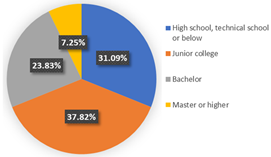 | |
| Class 2 | 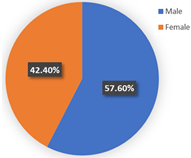 |  |  | |
| Car ownership | Income | Household composition | ||
| Class 1 |  |  | 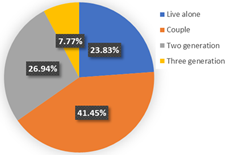 | |
| Class 2 | 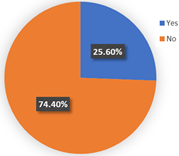 | 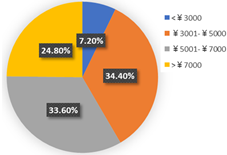 |  | |
| Commute travel mode | Entertainment travel mode | |||
| Class 1 |  |  | ||
| Class 2 |  |  | ||
| Wave 1 | Wave 2 | ||||
|---|---|---|---|---|---|
| Transit | Class 2 | Class 3 | Class 4 | Class 1 | Class 2 |
| ITT | −1.318 | −1.785 | −2.388 | −0.139 | −0.036 |
| PC = 30% | 5.374 | 4.172 | 6.913 | 0.725 | 1.344 |
| PC = 50% | 0.318 | −0.624 | −1.013 | −0.259 | 0.197 |
| PC = 80% | −5.682 | −3.570 | −5.900 | −0.466 | −1.542 |
| OTT = 5 min | 3.056 | 16.538 | 3.538 | 1.069 | 3.124 |
| OTT = 10 min | 1.346 | −2.548 | 1.188 | 0.083 | 1.143 |
| OTT = 15 min | −1.140 | −5.215 | −1.313 | 0.024 | −2.126 |
| OTT = 20 min | −3.271 | 3.516 | −3.413 | −1.175 | −2.141 |
| Auto | Class 2 | Class 3 | Class 4 | Class 1 | Class 2 |
| ITT | −0.898 | −0.830 | −0.765 | −1.322 | −0.504 |
| OTT = 2 min | 5.598 | 10.759 | 4.899 | 1.587 | 7.092 |
| OTT = 6 min | −1.724 | 6.950 | 1.244 | 1.295 | 2.400 |
| OTT = 10 min | −1.795 | −4.766 | −2.824 | −1.033 | 3.535 |
| OTT = 14 min | −2.079 | −12.936 | −3.311 | −1.848 | −13.027 |
Publisher’s Note: MDPI stays neutral with regard to jurisdictional claims in published maps and institutional affiliations. |
© 2022 by the authors. Licensee MDPI, Basel, Switzerland. This article is an open access article distributed under the terms and conditions of the Creative Commons Attribution (CC BY) license (https://creativecommons.org/licenses/by/4.0/).
Share and Cite
Luan, S.; Yang, Q.; Jiang, Z.; Zhou, H.; Meng, F. Analyzing Commute Mode Choice Using the LCNL Model in the Post-COVID-19 Era: Evidence from China. Int. J. Environ. Res. Public Health 2022, 19, 5076. https://doi.org/10.3390/ijerph19095076
Luan S, Yang Q, Jiang Z, Zhou H, Meng F. Analyzing Commute Mode Choice Using the LCNL Model in the Post-COVID-19 Era: Evidence from China. International Journal of Environmental Research and Public Health. 2022; 19(9):5076. https://doi.org/10.3390/ijerph19095076
Chicago/Turabian StyleLuan, Siliang, Qingfang Yang, Zhongtai Jiang, Huxing Zhou, and Fanyun Meng. 2022. "Analyzing Commute Mode Choice Using the LCNL Model in the Post-COVID-19 Era: Evidence from China" International Journal of Environmental Research and Public Health 19, no. 9: 5076. https://doi.org/10.3390/ijerph19095076






